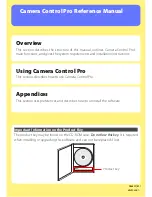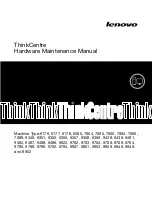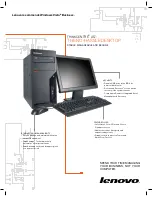
Performance
SECTION 20 Best Practices
264
always perform a calculation e.g. calculate a running average or to format
it e.g. make "1700" become "17:00". Instead consider writing this
conversion as ladder in the PLC hardware rather than in CX-Supervisor
software. This is particularly true if this conversion has to occur on several
pages where the value is used or before data logging. This ensures the
converted value is always available, and results in a simplified solution.
•
Perform all timing functions and pulse generation from PLC ladder
The PLC hardware has far superior timing and accuracy than Windows
can provide. When timing a process or event always use the PLC. The
stored result can then be read by the SCADA at its leisure. If creating a
pulse of fixed duration never attempt to design the SCADA to set a bit,
wait, and clear the bit. Instead, allow the SCADA to set the bit but use the
PLC program to clear the bit after the required time.
•
Operation should continue if the SCADA is unplugged
In a well designed system normal operation can continue even if the
SCADA is unplugged. Some functions like data logging, batch control and
control obviously will not be available but the system should be able to
continue with its task until completion. That is, the process should not rely
on co-operation between the SCADA and PLC because of the possibility
of failure e.g. of the power supply, PC components or operating system.
•
Ensure the PLC has hardware failsafes
In situations where the system can cause damage e.g. to itself, the
materials or people it is essential to ensure the PLC has suitable
safeguards and failsafes to prevent such damage. Given the possibility of
SCADA failure it is not acceptable to implement such failsafes in software.
Care should also be paid to the design of software 'control' to allow and
cope with the possible refusal of operation from the PLC.
20-2
Performance
This section covers some good practices to ensure excellent performance.
20-2-1 Organise the PLC memory properly
This is probably the single most important practice to provide maximum
performance and the best responsiveness.
It is important to design the PLC program and SCADA application together.
This will naturally help create arrays of information, and optimise
communications allowing CX-Server to collect data in the most efficient
manner.
Consider the examples in the following 2 figures:
Содержание CX-Supervisor
Страница 1: ...CX Supervisor Software Cat No W10E EN 01 User Manual Software Release 3 1...
Страница 3: ...Copyright Notice 2...
Страница 16: ...15...
Страница 17: ...16...
Страница 27: ...Tip of the Day SECTION 1 Graphics Editor 26...
Страница 35: ...CX Supervisor Preferences SECTION 2 Pages 34...
Страница 79: ...Responding to Events SECTION 5 ActiveX Objects 78...
Страница 115: ...Printing the Graphics Library SECTION 7 Graphics Library 114...
Страница 181: ...Data Logging SECTION 11 Data Logging 180...
Страница 201: ...Examples SECTION 12 Databases 200...
Страница 243: ...Performance Monitor SECTION 16 Application Analysis Performance Monitor 242...
Страница 253: ...Using with Omron s CX Server OPC SECTION 17 Using CX Supervisor as an OPC Cli 252...
Страница 259: ...Creating a CX Supervisor Client application SECTION 18 Connecting to a remote CX 258...
Страница 263: ...Adding a Point Linked to a Parameter SECTION 19 Connecting to Omron Industrial 262...
Страница 271: ...Data Logging SECTION 20 Best Practices 270...
Страница 275: ...Configuring a Server PC running Windows NT or 2000 Appendix A Configuring a PC 274...
Страница 277: ...Appendix B Frequently Asked Questions 276...
Страница 296: ...Appendix B Frequently Asked Questions 295...
Страница 297: ...Appendix B Frequently Asked Questions 296...
Страница 298: ...Appendix B Frequently Asked Questions 297...
Страница 299: ...Appendix B Frequently Asked Questions 298...
Страница 333: ...Revision history 332...















































